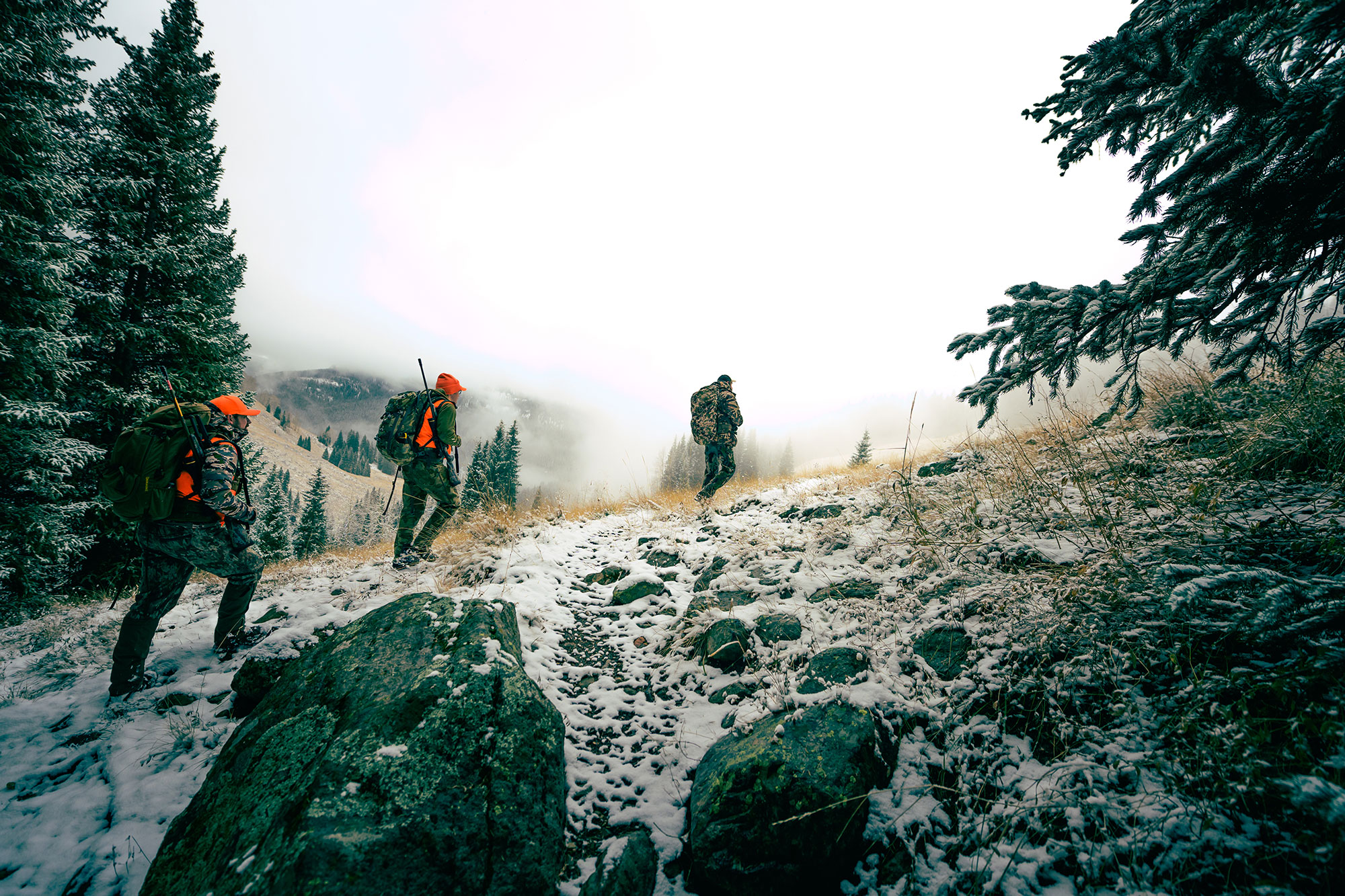THERE ARE FOUR MOMENTS common to any true Colorado elk hunt. First, you climb a mountain slope so steep and so thin in oxygen that you find yourself counting each step. Second, you take a nap in the sunshine above 10,000 feet and dream vividly of a bull bugling—and you startle awake wondering if it was, in fact, a dream. Third, you make a lonely hike through the darkness, going back to camp after an unsuccessful day of hard hunting, and stop for a moment because your feet hurt, and so do your knees, and then you look up and finally notice a starscape above so brilliant that it makes you laugh. Fourth, you run your hands over the antlers of the dead bull at your feet and know that this moment is the culmination of all the others.
I’m having a true Colorado elk hunt—well, except for that fourth part. My hunting partner Nathan Robinson (no relation that we can trace) and I have been following our guide Paul Ritchey through the mountains of the San Juan National Forest, and we have yet to even see a legal bull (at least four points on one side or a 5-inch brow tine). It’s now day three of the hunt.
Paul and I glass a faraway ridgeline while Nathan watches over a stand of aspens behind us. The ridge turns golden with early-morning light, and I pick through the edges of each open park with my binocular.
“It’s crazy that there’s no elk up there,” I say to Paul, an experienced mountain guide who spends much of his season finding Dall rams for sheep hunters in Alaska. Not more than three minutes later, Paul replies, “There’s elk.”
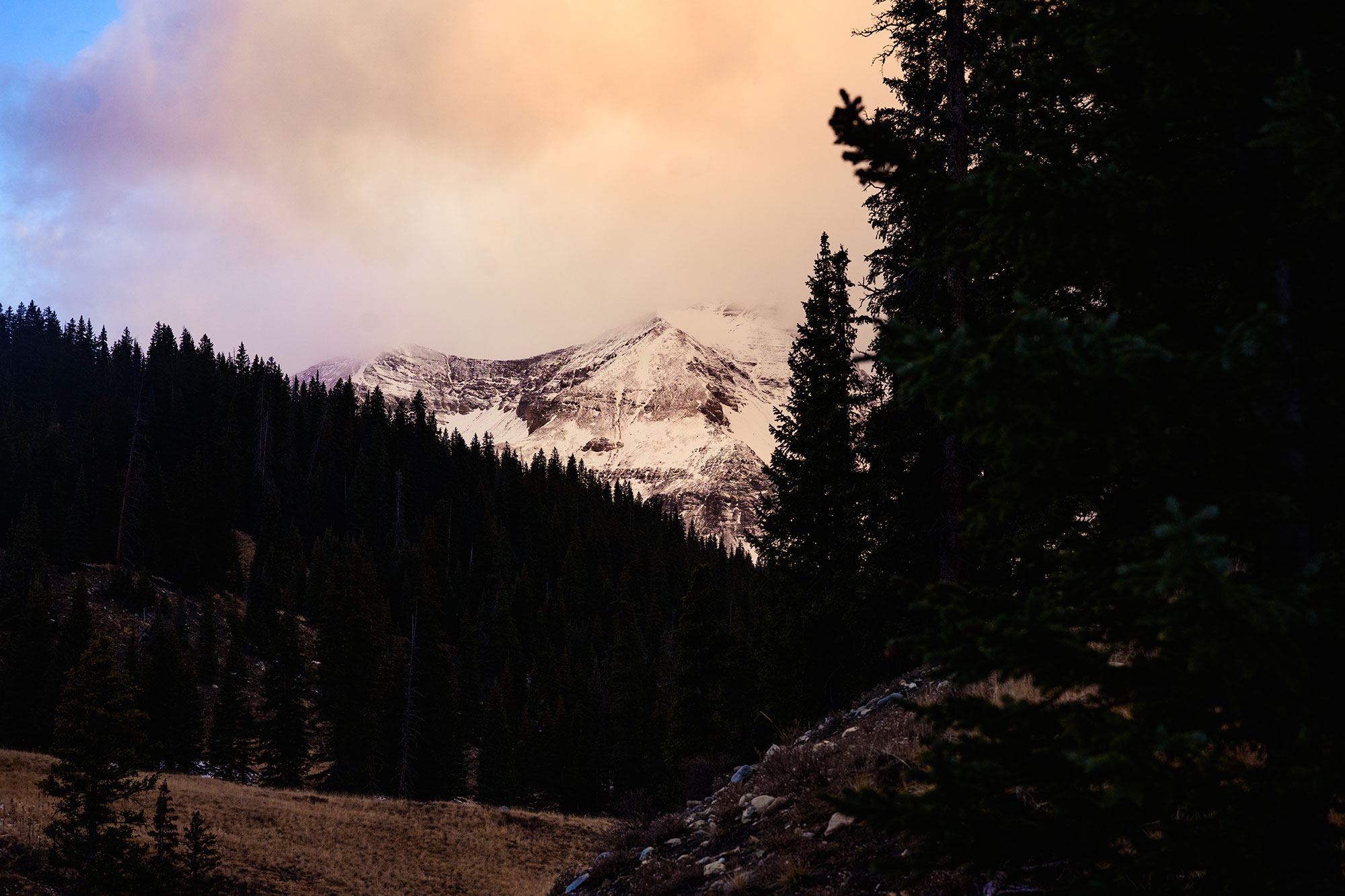
Through a gap in the timber about the size of a living room, we can see two tawny hides. Then more elk appear in the opening. Paul pulls out his spotting scope just in time to catch a glimpse of a bull—a legal bull.
“He’s at least a 5×5,” Paul says. “Not a giant, but a nice one.”
And with that, the little elk herd disappears into the timber above. They’re only 1.29 miles away by direct line of sight, but it’ll take us all morning to hike up to them. At least now we have a plan.
Public Problems
Nathan and I are hunting in an over-the-counter elk unit during the second rifle season, which is the elk-hunting equivalent of opening day of deer season in Wisconsin or maybe the dove opener in Texas. That is to say, there are other hunters in the woods and at trailheads. Lots of them.
It wasn’t supposed to be this way. Nathan and Shaundi Campbell (both of whom work for Browning and Winchester) had hired Slick Rock Outfitters to take us deep into the backcountry. We’d drive up a private road and then ride even farther in on horseback to reach areas of the national forest that other hunters would have a hard time accessing.
Except it snowed. An early blizzard made that whole basin impassible, and even if we could get up there, the elk had likely left. So Plan B was to hunt the national forest from easier access points.
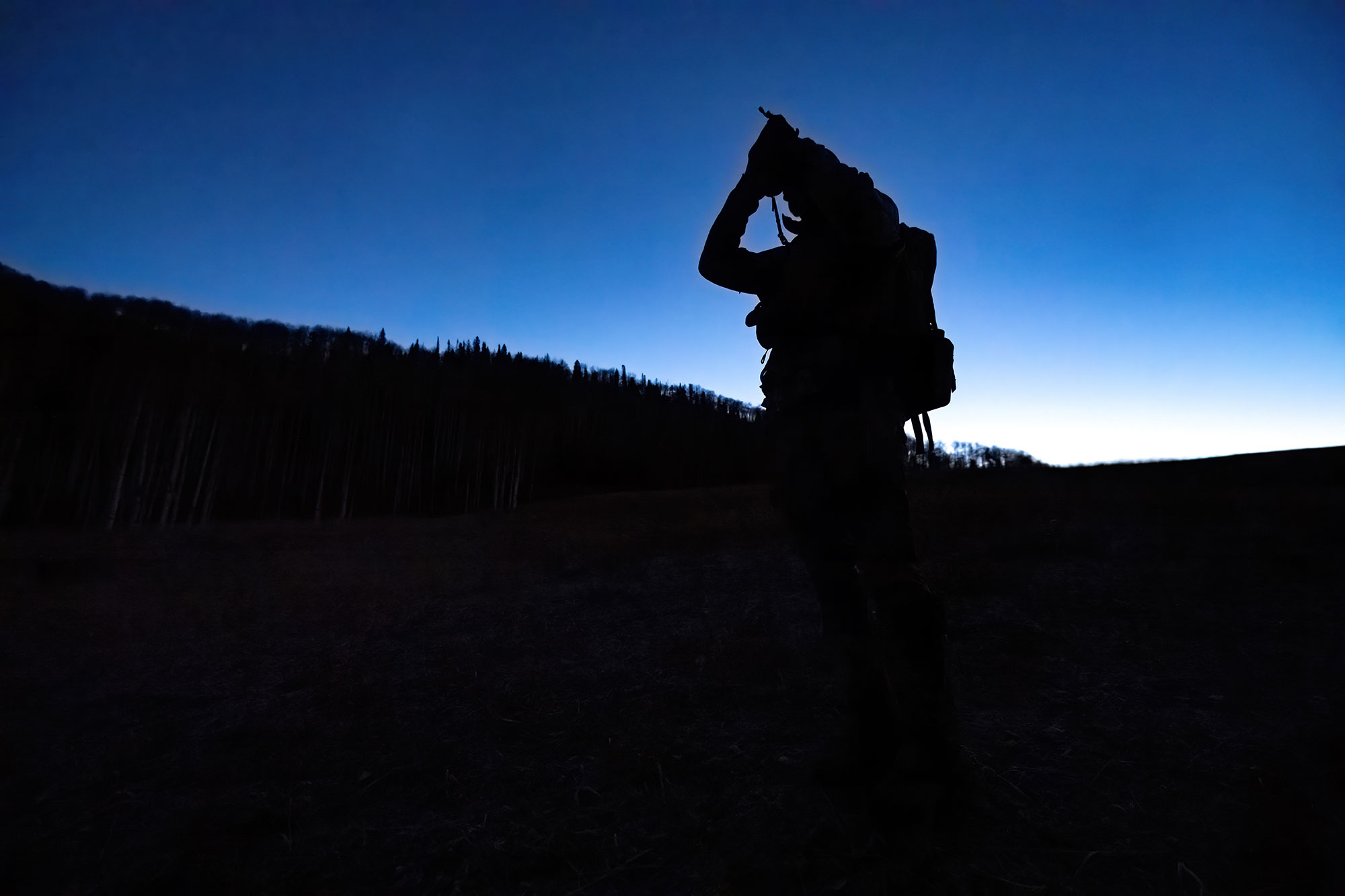
The beauty of the OTC Colorado elk season is that anyone can hunt it. Midwestern deer hunters like Nathan and me can caravan into the Rockies and chase bull elk on public land until our flatlander legs give out. We can do this every year if we like. The downside of the OTC Colorado elk season, of course, is that everyone does hunt it. Colorado sells upward of 90,000 over-the-counter elk tags each season, and almost half of them go to nonresidents.
While the bars and restaurants in town hang Welcome, Hunters signs, the resident elk hunters aren’t as enthusiastic about this flood of out-of-staters. The savviest locals pack deep into mountain honey holes, or they wait to draw limited-entry tags, which are getting harder and harder to come by.
The promise of bull elk and high adventure keeps nonresidents heading West year after year despite brutal success rates. For the 2020 season, the average success rate for all rifle hunters with bull tags was 16 percent. In other words, if I hunted in Colorado for six seasons in a row and killed one bull, I’d be on par with the average.
And still, the number of nonresident hunters ticks up each year. I get the appeal. I’ve hunted elk in Colorado three times before this and have yet to kill one here. The more seasons you go without punching a tag, the more you want it next season. Sure, there are plenty of draw hunts and guided hunts on private land around the continent that offer much higher success rates on much bigger bulls. But those trips will cost you $10,000 or more. A nonresident Colorado elk tag costs $670. Throw in gas and some camp food, and you can hunt elk for a week on $1,500.
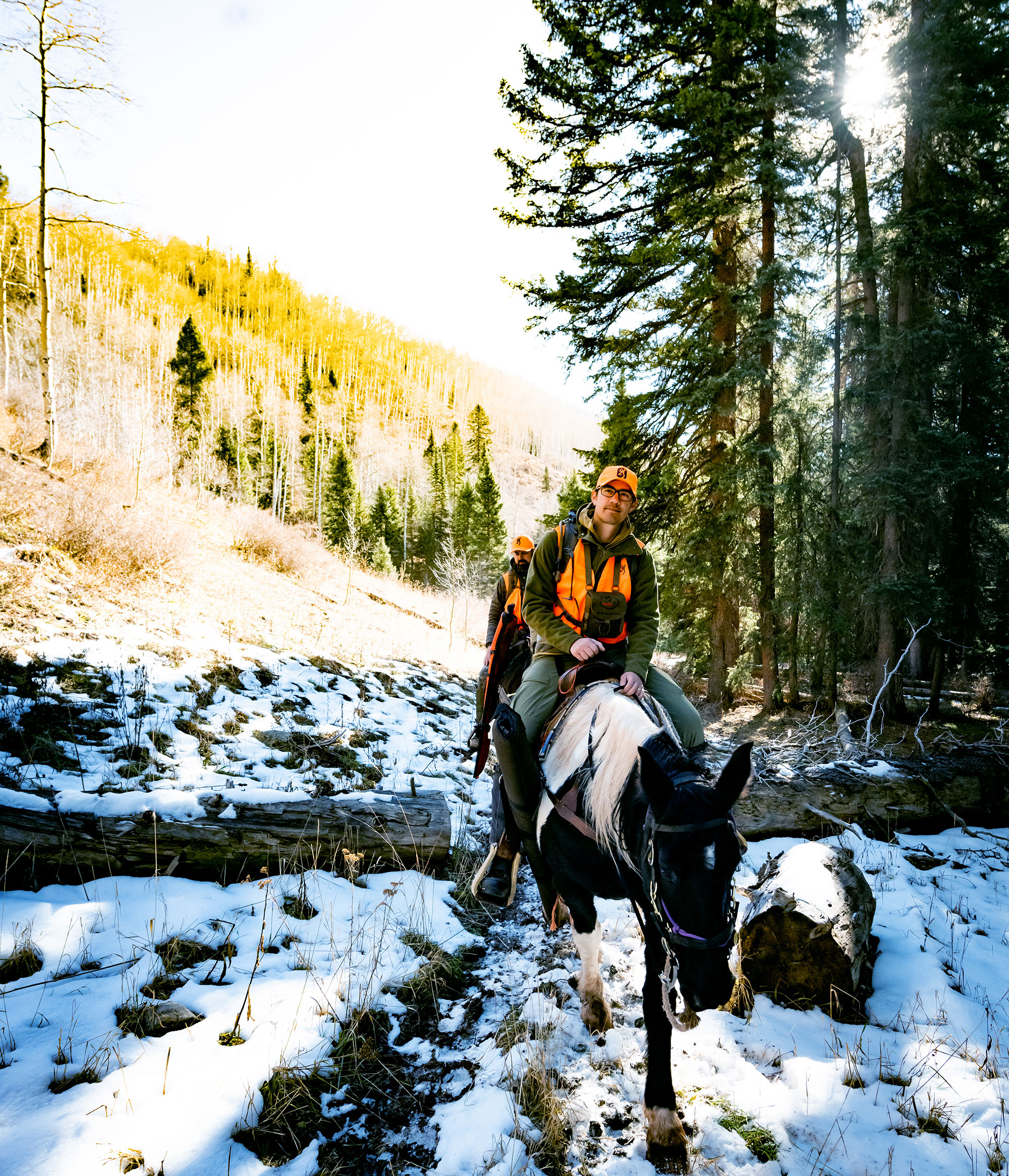
Into the High Country
If you want to see elk on public land during hunting season in Colorado, point your binocular to a spot where you hope you won’t see elk. A slope so steep that it looks dangerous. A peak so far away that it will require you to spend more time hiking or riding at night than sleeping. Point your glass to these Godforsaken places, and elk will appear.
But will they reappear when you finally get there? That’s the question I was left chewing on as I watched over a grassy park near the timber where Paul had spotted the bull earlier this morning. I was just below the top of the ridge, at almost 11,000 feet.
I’d built a little blind in a patch of evergreens, eaten my lunch, and taken my nap. I’d pulled on my warm layers and settled in for the last few hours before sunset, hoping the bull would step out of the timber to graze.
Nathan and Paul had taken a different route up the mountain to sit on the opposite side of the timber. We figured we had the bull and his cows surrounded, unless of course he’d slipped off the back side of the mountain to graze that evening.
As the sun sank behind the mountains, I caught movement below me, a flash of light-colored fur slipping through the wild grass. I pulled up my binocular to spot a stud…red fox. I watched the fox leap atop a quartered-out elk carcass that I’d failed to notice earlier. Clearly, I was not the first elk hunter to climb the ridge this season. As the fox pulled hunks of decaying meat off the carcass, I slung my pack and descended the mountain through the falling darkness.
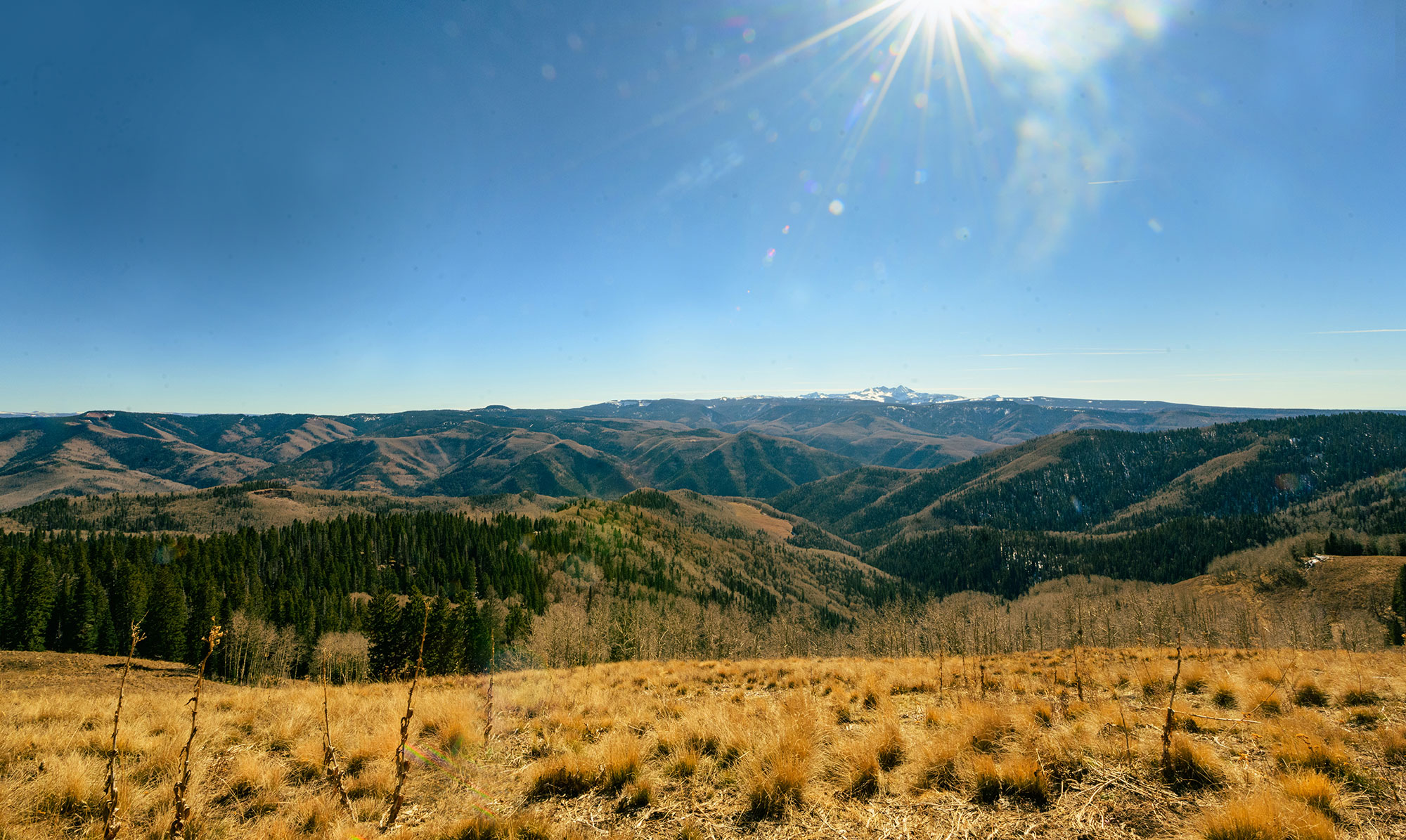
The next day, we tried the same plan: glassing from the bottom at first light, hiking to the top and waiting until dark. We got the same result. Tomorrow is the last day of our hunt.
“Well, at least we only have to do this one more time,” Nathan said as we hustled down the trail, leading our tired horses and trying like hell to keep up with Paul.
Plan C
A good mountain hunt brings humility. And I don’t mean the “humility” that people use on social media these days. They write, for example, “I’m humbled to hunt these magnificent animals,” and post a photo of a giant bull they’ve killed. Then they go on to brag about how amazing the hunt was. No, I’m talking about the traditional, literal meaning of humility: a lowering of one’s importance; a lack of pride. A good mountain hunt will show you that you are not in such good shape as you expected to be, that you’re not as skilled a hunter as you had hoped, and, perhaps, that you are not quite the man you thought you were.
So on the last day of our trip, thoroughly freed from our pride, we get the go-ahead to hunt private land. The outfitter has access to a few high-desert ranches that are usually reserved for mule deer hunters, but with only one mule deer hunter in camp, we get the run of the place.
Predawn finds us glassing from a pickup truck with heated seats. Before us lies a rolling sea of sagebrush and draws choked with juniper. The elk we’re after are local critters. They live in a mix of private rangeland, BLM ground, and agricultural fields.
When we have sufficient shooting light, Paul and Nathan head west and send me east. Paul is a faithful mountain hunter and came to guide elk in Colorado mostly so he could work with horses. I guess he doesn’t know that for Western front-country hunts, you’re supposed to just drive around until you spot a bull or buck. So we throw on our packs and strike out on foot.
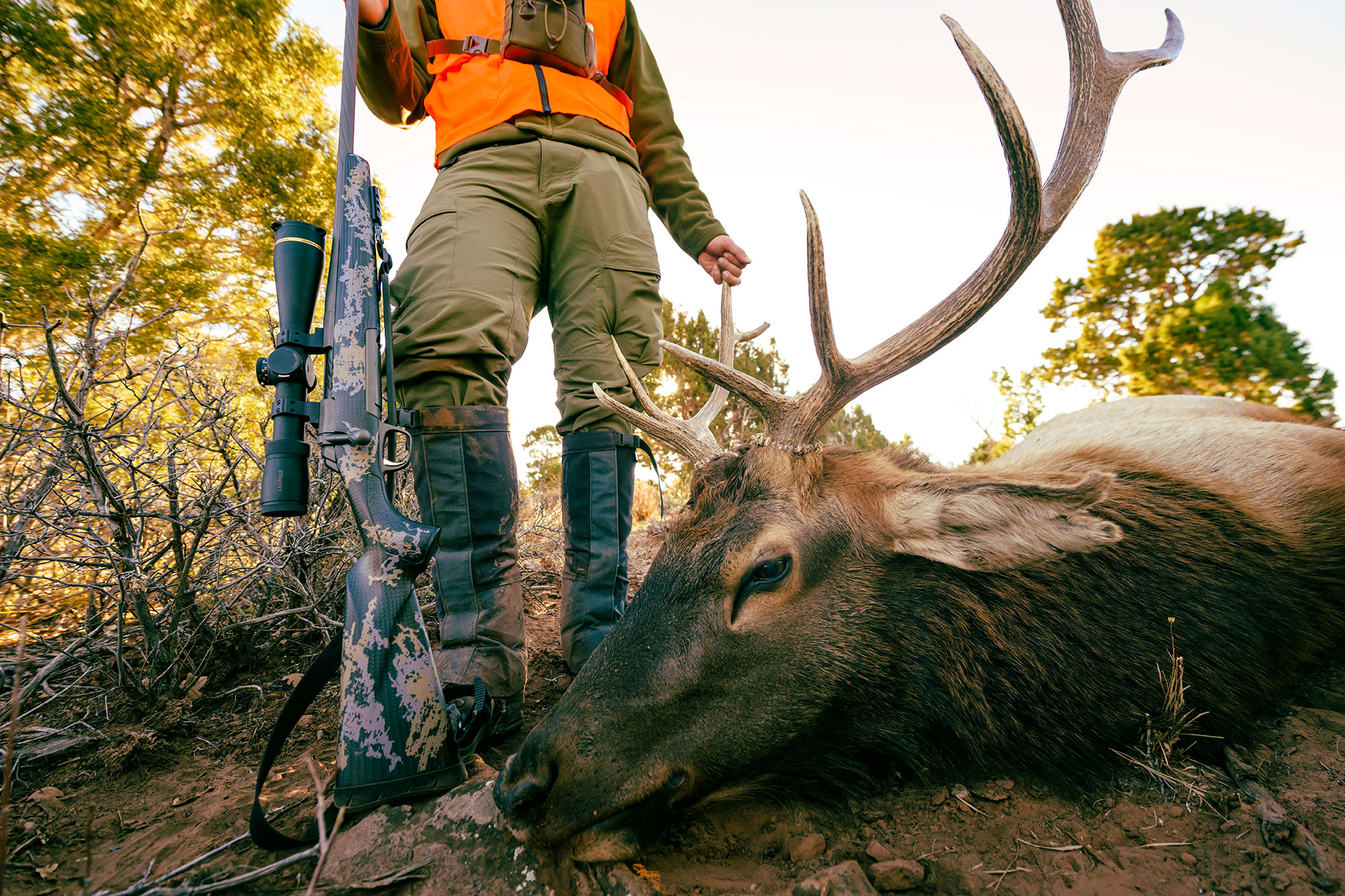
I sneak a few hundred yards away from the truck and come to a draw that curls in front of me. I’m so intent on glassing the far side of it that I almost miss the three elk not 100 yards below me. They’re trotting away but don’t seem fully spooked.
The trio link up with more elk on the far side of the draw. I crawl to the nearest bush and start furiously glassing for a bull. I count 10 elk, but the only antlers I see belong to a spike. Then I hear a bugle. The wind is in my face, and I fight the urge to just stalk directly toward the elk, which are now about 600 yards out. They’re moving up the draw, and I can pick up only flashes of tan hide through the brush. Instead I cut south, hoping they’ll reappear in an opening a few hundred yards away.
I’m just about to sit with my back to a juniper bush when I hear footfalls. Then I hear an elk step over a barbed wire fence. I do not actually see this, because the fence is obscured by sage, but the sound is as obvious as the sight would have been. A second later, two cow elk appear 100 yards below me in the draw. The fence creaks again, and a small herd of mule deer now filter through the draw. The fence creaks a third time, and there, at long last, is a bull.
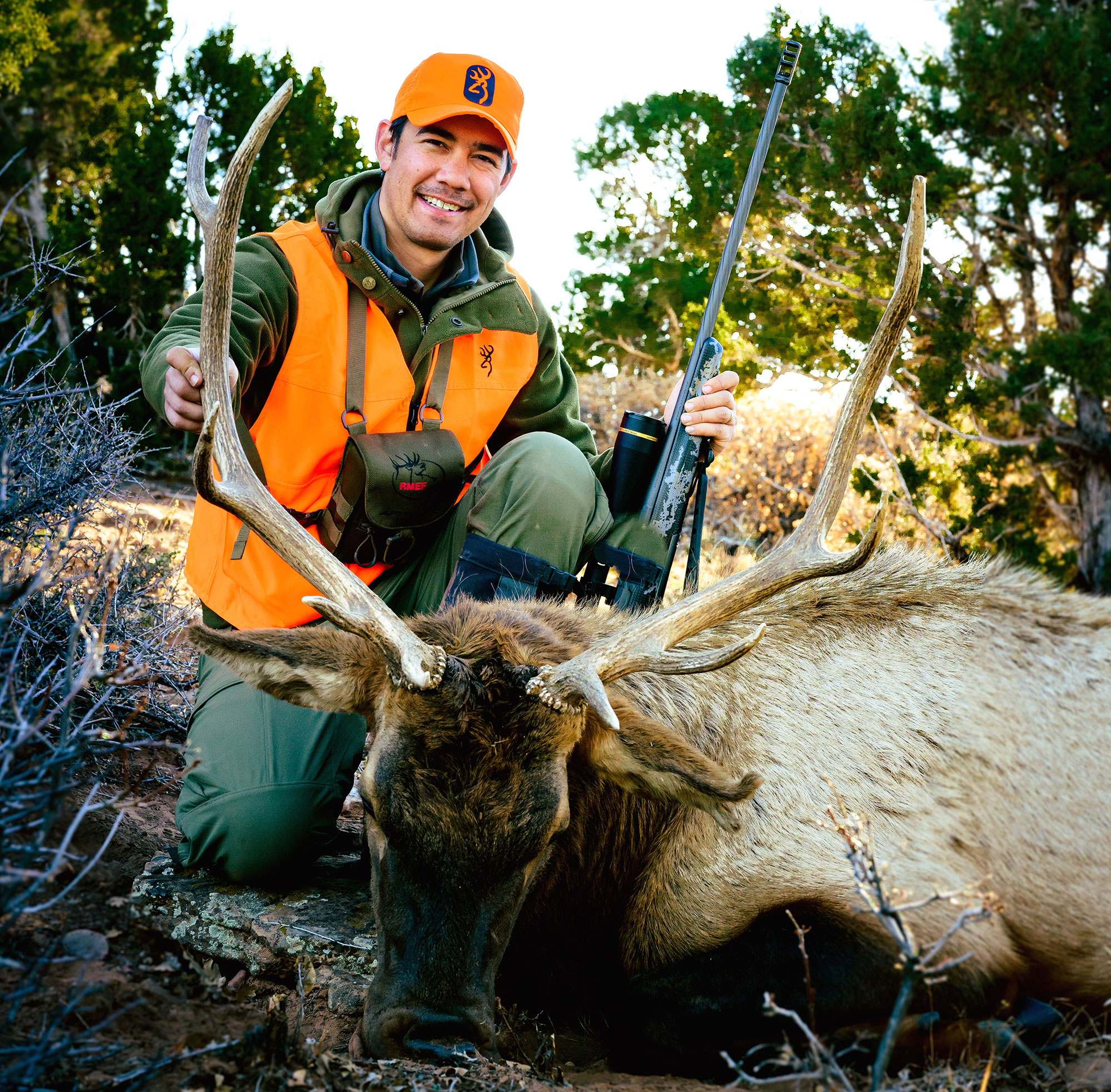
I throw the rifle up, spot four points, find the bull’s shoulder as he moves between junipers, and will the gun to fire. The bull drops where he stands. A quick follow-up shot brings my hunt in Colorado to an end.
When I get up close to him and run my hands over his antlers, I see that he is a young 5×5—almost the spitting image of the bull that eluded us up in the mountains. That bull, I hope, will still be up there next season.
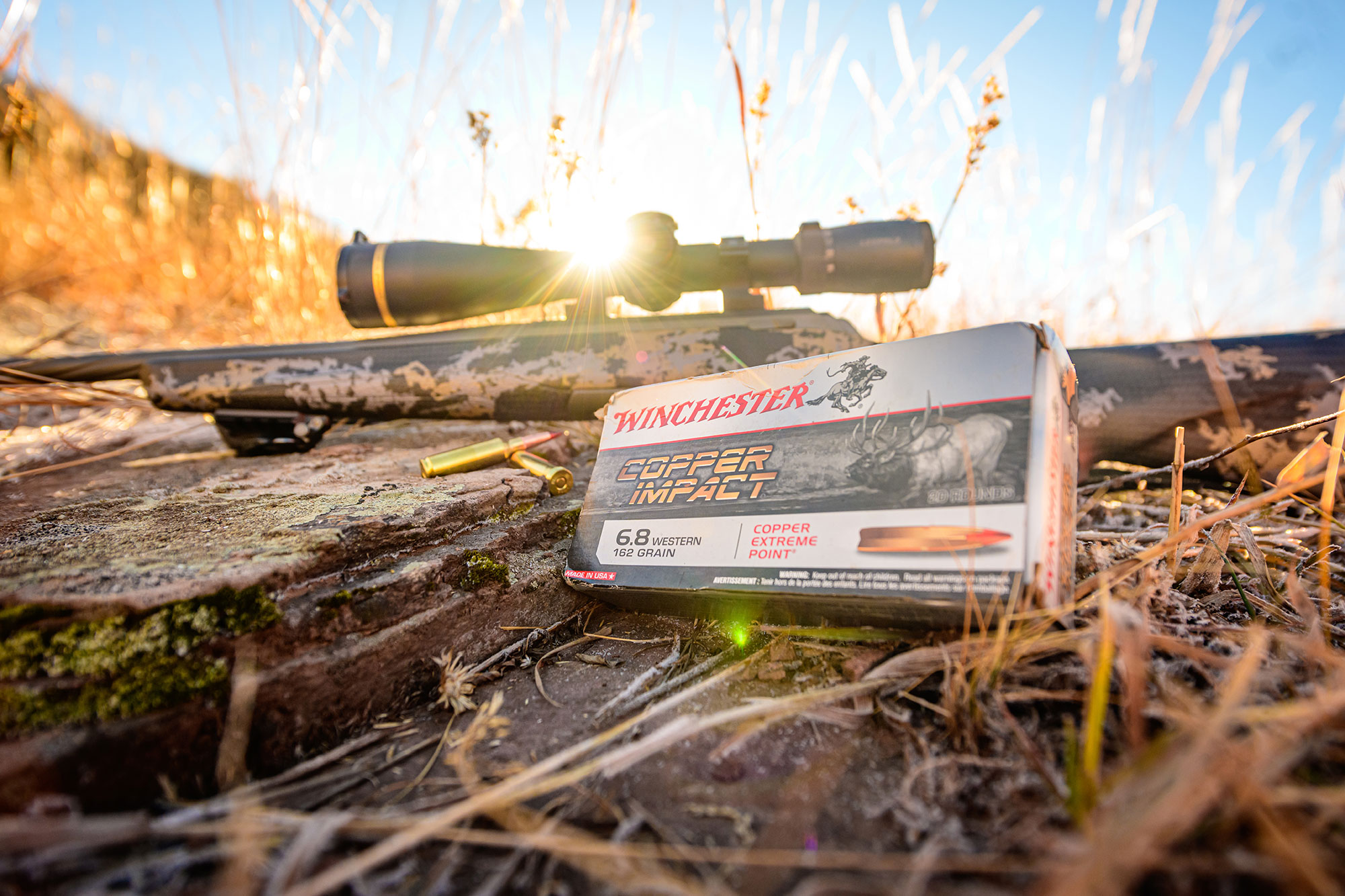
Loaded for Bull
I hunted with Browning’s new X-Bolt Mountain Pro Long Range rifle, which just might be the best X-Bolt I’ve ever shot. At the very least, it is the fanciest. In 6.8 Western with a 26-inch barrel, the rifle weighs 6 pounds 12 ounces. The carbon stock, Cerakote barrel, and crisp trigger bring custom features to a stock rifle. A cushy butt pad and the Recoil Hawg muzzle brake take the bite out the gun. Through this rifle I shot Winchester’s new Copper Impact 162-grain loads. The first shot on my bull broke both of his shoulders and exited. Incredibly, there was minimal meat damage, proving the bullet stayed together as a copper bullet is designed to do. We found the second slug, a coup de grâce shot fired from 20 yards, while quartering out the bull. Surprisingly, it didn’t mushroom at such a close range (given the impact velocity), but it did hold together. This rifle and load made for a capable 400-yard elk hunting rig in the hands of a Midwestern deer hunter like me.
This story originally ran in the Trophy issue of Outdoor Life. Read more OL+ stories.
